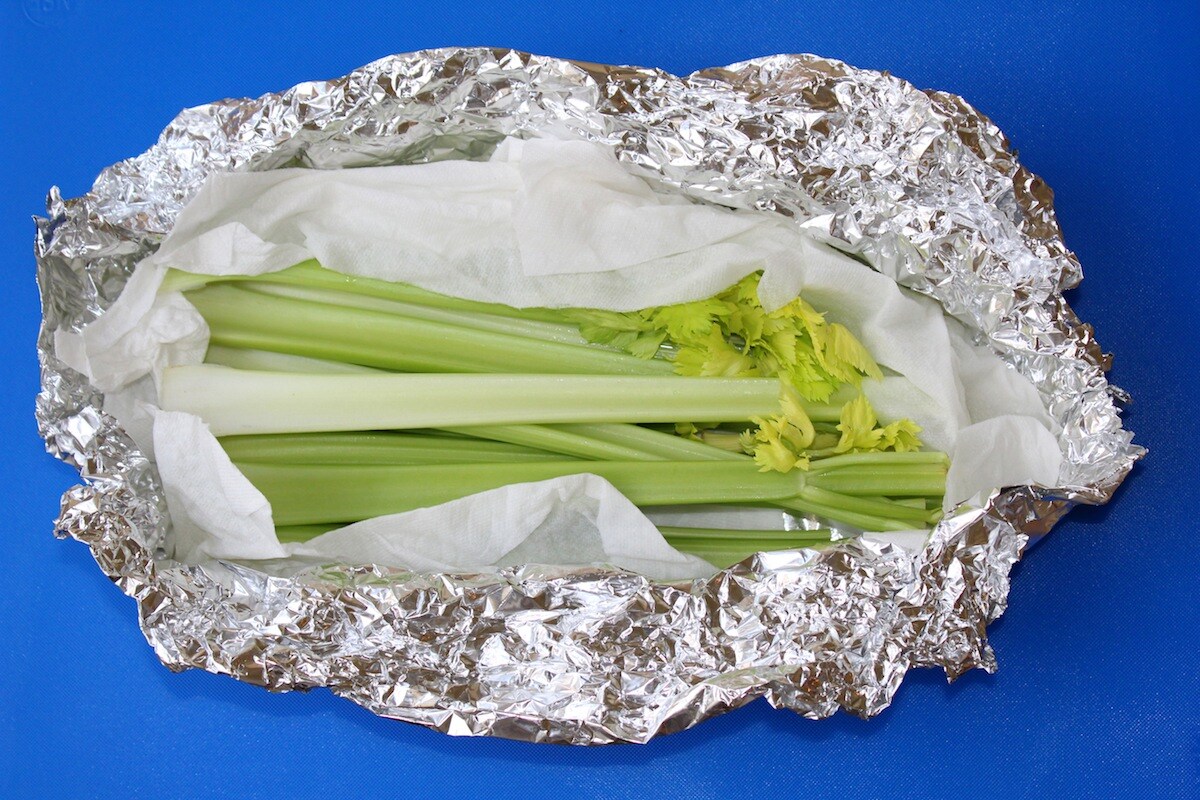

Articles
How To Store Celery
Modified: February 23, 2024
Learn the best methods for storing celery in this comprehensive guide. Keep your celery fresh and crisp with these helpful tips and tricks.
(Many of the links in this article redirect to a specific reviewed product. Your purchase of these products through affiliate links helps to generate commission for Storables.com, at no extra cost. Learn more)
Introduction
Celery is a versatile vegetable that is commonly used in various dishes and recipes. Whether you enjoy it raw, cooked, or as a flavor enhancer in soups and stews, it’s important to properly store celery to maintain its freshness and crispness. By taking the right measures, you can ensure that your celery stays delicious and ready to use whenever you need it.
In this article, we will discuss the best methods for storing celery so that it retains its flavor, texture, and nutritional value. From selecting fresh celery to various storage options, we’ll cover everything you need to know to keep your celery fresher for longer.
So, let’s dive in and learn the tips and techniques for properly storing celery!
Key Takeaways:
- Keep celery fresh by selecting vibrant, firm stalks and preparing them with care. Store in the fridge, freezer, water, airtight containers, or wraps to maintain crispness and flavor for extended use.
- Whether in the fridge, freezer, or water, proper storage methods ensure celery stays fresh and ready for use. Check regularly for spoilage and enjoy its versatility in various dishes.
Read more: How To Store Celery In Freezer
Tips for Selecting Fresh Celery
When it comes to storing celery, the first step is to choose fresh, high-quality stalks. Here are some valuable tips to help you select the best celery:
- Look for vibrant color: Choose celery with crisp, vibrant green stalks. Avoid any that have a yellow or brown tint, as this can indicate age or spoilage.
- Inspect the stalks: Examine the celery stalks to ensure they are firm and sturdy. They should not be limp or wilted.
- Check for freshness: Gently squeeze the celery stalks to feel if they are firm and have a solid texture. Fresh celery will be crunchy and not have any soft spots.
- Examine the leaves: The leaves of the celery should be vibrant and green, rather than dry or yellowed.
- Avoid excessively thick or thin stalks: Look for celery stalks that are of medium thickness. Extremely thick stalks may be tough, while very thin stalks may lack flavor.
By following these tips, you can ensure that you select the freshest celery available. Fresh celery not only tastes better but also has a higher nutritional content.
Preparing Celery for Storage
Before storing celery, it’s important to properly prepare it to ensure optimal freshness and longevity. Follow these steps to prepare celery for storage:
- Trim the ends: Start by trimming the ends of the celery stalks. Cut off any dry or brown ends and discard them.
- Separate the stalks: Carefully separate the celery stalks from each other. This will make it easier to store and prevent them from sticking together.
- Wash thoroughly: Rinse the celery stalks under cool water to remove any dirt or debris. Use a vegetable brush if necessary to scrub away any stubborn dirt.
- Dry the celery: After washing, make sure to thoroughly dry the celery stalks. Excess moisture can lead to spoilage. Use a clean kitchen towel or paper towels to pat the celery dry.
- Optional: Remove leaves: If desired, you can remove the leaves from the celery stalks. The leaves tend to wilt faster, so removing them can help extend the freshness of the stalks.
By following these simple steps, you can ensure that your celery is clean, dry, and ready to be stored. Properly preparing the celery will help maintain its freshness and crispness for a longer period of time.
Storing Celery in the Refrigerator
The refrigerator is an ideal place to store celery as it helps to maintain its freshness and crispness. Here’s how you can store celery in the refrigerator:
- Wrap in aluminum foil: To keep celery fresh, loosely wrap the stalks in aluminum foil. This will help to retain moisture and prevent the celery from wilting.
- Store in a plastic bag: Alternatively, you can place the wrapped celery in a perforated plastic bag. The perforations allow for proper airflow, preventing excess moisture buildup.
- Store in the crisper drawer: Put the wrapped celery in the crisper drawer of your refrigerator. The crispier drawer offers a more controlled environment with higher humidity levels, which helps to prolong the freshness of the celery.
- Avoid close proximity to ethylene-producing fruits and vegetables: Keep celery away from ethylene-producing fruits and vegetables, such as apples, bananas, and tomatoes. Ethylene can accelerate the ripening process and cause the celery to spoil faster.
- Check periodically: Periodically check the celery for any signs of wilting or spoilage. Remove any stalks that have become soft or slimy to prevent them from contaminating the rest of the celery.
By storing celery properly in the refrigerator, you can extend its shelf life and ensure that it remains crisp and fresh for up to two weeks.
Now that you know how to store celery in the refrigerator, let’s explore other storage options to maximize its longevity and versatility.
Storing Celery in the Freezer
Freezing celery is a great option if you want to prolong its shelf life for an extended period. Here’s how you can store celery in the freezer:
- Prepare the celery: Start by washing and trimming the celery stalks as mentioned earlier. Cut the celery into small pieces or slices, depending on your preference and how you plan to use it later.
- Blanch the celery: Blanching is a crucial step that helps preserve the celery’s flavor, texture, and color. Bring a pot of water to a boil and immerse the celery in the boiling water for about 1-2 minutes. Then, quickly transfer the celery to an ice bath to stop the cooking process.
- Drain and dry the celery: After blanching, drain the celery and pat it dry with a clean kitchen towel or paper towels. Making sure the celery is dry will prevent the formation of ice crystals and maintain its quality.
- Package for freezing: Place the blanched and dried celery into freezer-safe containers or freezer bags. Make sure to remove as much air as possible from the packaging to prevent freezer burn. Label the container with the date to keep track of its freshness.
- Freeze: Put the packaged celery in the freezer and make sure it’s arranged in a single layer, allowing for quick and even freezing. Once frozen, you can stack the containers or bags to save space.
The frozen celery can be stored in the freezer for up to 6-8 months. It is important to note that freezing celery may change its texture, so it’s best to use frozen celery in cooked dishes like soups, stews, and stir-fries, rather than consuming it raw.
Now that you know how to store celery in the freezer, you have the flexibility to enjoy celery in your favorite recipes throughout the year.
To store celery, wrap it in aluminum foil and keep it in the crisper drawer of the refrigerator. This will help keep it fresh and crisp for up to two weeks.
Read more: How To Store Celery Sticks
Storing Celery in Water
Another method to store celery and keep it fresh and crisp is by storing it in water. This method helps to maintain the celery’s hydration levels and prolong its shelf life. Here’s how you can store celery in water:
- Cut the celery stalks: Start by cutting the celery stalks into the desired length. Remove any leaves if desired.
- Place in a container: Fill a container or a glass with enough water to submerge the bottom part of the celery stalks.
- Submerge the celery: Place the cut celery stalks into the container, making sure the bottom parts are fully submerged in water. The water will help keep the celery hydrated and maintain its crispness.
- Cover the container: Cover the container loosely with a plastic wrap or a lid to prevent evaporation and contamination.
- Store in the refrigerator: Place the container with the celery in the refrigerator. Change the water every few days to ensure freshness and prevent any bacterial growth.
This method is excellent for maintaining the crispness of celery for a longer period. It is especially useful for pre-cut celery that you plan to use in salads, garnishes, or as snack sticks.
However, it’s important to note that storing celery in water may cause it to lose some of its nutritional content over time. Therefore, if you plan to use the celery in cooked dishes, it’s best to store it in the refrigerator or freezer using the methods mentioned earlier.
Now that you know how to store celery in water, you can enjoy its fresh and crisp taste whenever you’re in the mood for a crunchy snack or a refreshing addition to your dishes.
Storing Celery in Airtight Containers
Using airtight containers is an effective method to extend the shelf life of celery and to keep it fresh for a longer period. Here’s how you can store celery in airtight containers:
- Prepare the celery: Start by washing and trimming the celery stalks, as mentioned earlier. Cut the celery into the desired size or leave them whole, depending on your preference.
- Dry the celery: After washing, make sure to thoroughly dry the celery stalks. Excess moisture can lead to spoilage, so use a clean kitchen towel or paper towels to pat them dry.
- Airtight container: Place the dry celery stalks in an airtight container. Make sure the container is suitable for storing vegetables and has a tight seal to prevent air from entering.
- Seal the container: Once the celery is inside the container, securely seal it. This creates a barrier against moisture and air, preventing the celery from wilting or losing its crispness.
- Refrigerate: Put the sealed container of celery in the refrigerator. The cool temperature helps to maintain freshness and prolong the shelf life of the celery.
- Check periodically: Regularly check the celery for any signs of spoilage. If you notice any mushiness or an unpleasant odor, discard the celery to avoid contaminating the other stalks.
Storing celery in airtight containers is a great option if you want to retain its crunchiness for salads, snacks, or other dishes that require raw celery. This method can help keep the celery fresh for up to two weeks, depending on its initial quality and freshness.
By using airtight containers, you can ensure that your celery stays crisp and ready to use whenever you need it, without worrying about it losing its freshness or becoming limp.
Storing Celery in Bags or WrapsAnother method for storing celery is by using bags or wraps, which helps to maintain its freshness and prevent wilting. Here’s how you can store celery using bags or wraps:
- Prepare the celery: Start by washing and trimming the celery stalks as mentioned earlier. Cut the celery into the desired size or leave them whole.
- Dry the celery: After washing, ensure that the celery stalks are thoroughly dried. Excess moisture can lead to spoilage, so gently pat them dry using a clean kitchen towel or paper towels.
- Plastic bags: Place the dry celery stalks in plastic bags, such as resealable bags or produce bags. Squeeze out any excess air from the bags before sealing them to create a snug fit around the celery.
- Wrapping with plastic wrap: Alternatively, you can individually wrap each celery stalk with plastic wrap. Be sure to wrap it tightly to prevent air exposure and retain moisture.
- Label the bags or wraps: If storing multiple bags or wrapped celery, it’s helpful to label them with the date to keep track of their freshness.
- Refrigerate: Place the bags or wrapped celery in the refrigerator. The cool temperature will help maintain the crispness and freshness of the celery.
Storing celery in bags or wraps helps to create a microclimate and protects the celery from air exposure, which can cause wilting and loss of moisture. This method can keep celery fresh for up to two weeks or even longer, depending on its initial quality.
When using celery from the bags or wraps, be sure to reseal them tightly to maintain the remaining celery’s freshness. Additionally, check the celery periodically for any signs of spoilage and discard any stalks that have become soft or slimy to prevent contamination.
By storing celery in bags or wraps, you can enjoy its crispness and flavor for a longer time, making it readily available for your favorite recipes or as a healthy snack option.
Storing Celery Leaves
Celery leaves are often overlooked, but they can add flavor and texture to various dishes. If you have celery leaves that you want to store for later use, follow these steps:
- Separate the leaves: Remove the leaves from the celery stalks, either by gently pulling them off or cutting them away. Set aside any leaves that are still fresh and vibrant.
- Wash thoroughly: Rinse the celery leaves under cool water to remove any dirt or debris. Shake off excess water or pat them dry with a clean kitchen towel or paper towels.
- Dry completely: Ensure that the celery leaves are completely dry before proceeding. Excess moisture can cause them to wilt quickly.
- Place in an airtight container: Transfer the washed and dried celery leaves to an airtight container. Make sure the container is suitable for storing herbs and has a tight seal.
- Refrigerate: Put the container of celery leaves in the refrigerator. The cool temperature will help to maintain their freshness for several days.
Celery leaves tend to wilt faster than the stalks, so it is recommended to use them within a few days for optimal flavor and texture. You can use the stored celery leaves as a garnish, in salads, soups, or even to infuse flavor into stocks or sauces.
Remember to check the celery leaves periodically for any signs of spoilage. Discard any leaves that have become discolored, slimy, or have a foul odor to prevent contaminating the rest of the leaves.
By storing celery leaves properly, you can make the most of this often-underappreciated part of the celery and add a burst of flavor to your culinary creations.
Read more: How To Store Fresh Celery
Conclusion
Properly storing celery is essential to maintain its freshness, flavor, and nutritional value. Whether you choose to store it in the refrigerator, freezer, water, airtight containers, bags, or wraps, each method has its advantages depending on your specific needs and preferences.
When selecting fresh celery, look for vibrant color, firmness, and avoid any signs of wilting or discoloration. Preparing celery for storage involves trimming the ends, separating the stalks, washing, and drying them thoroughly.
Storing celery in the refrigerator is a popular choice, especially when wrapped in aluminum foil or placed in airtight containers. This helps to maintain moisture and prevent wilting. Additionally, storing celery in water keeps it hydrated and crisp, while freezing celery is ideal for long-term preservation.
Whether you store the whole stalks, cut pieces, or even the leaves, following the proper steps for each storage method is crucial to maximize the freshness and shelf life of celery.
Remember to check stored celery regularly for any signs of spoilage and discard any pieces that have gone bad to avoid contamination. With the right storage techniques, you can enjoy fresh and crispy celery in your dishes, soups, salads, or as a healthy snack for an extended period.
So, next time you buy celery, don’t let it go to waste. Use these storing methods to keep it fresh and ready to enhance your culinary creations whenever you need it!
Frequently Asked Questions about How To Store Celery
Was this page helpful?
At Storables.com, we guarantee accurate and reliable information. Our content, validated by Expert Board Contributors, is crafted following stringent Editorial Policies. We're committed to providing you with well-researched, expert-backed insights for all your informational needs.
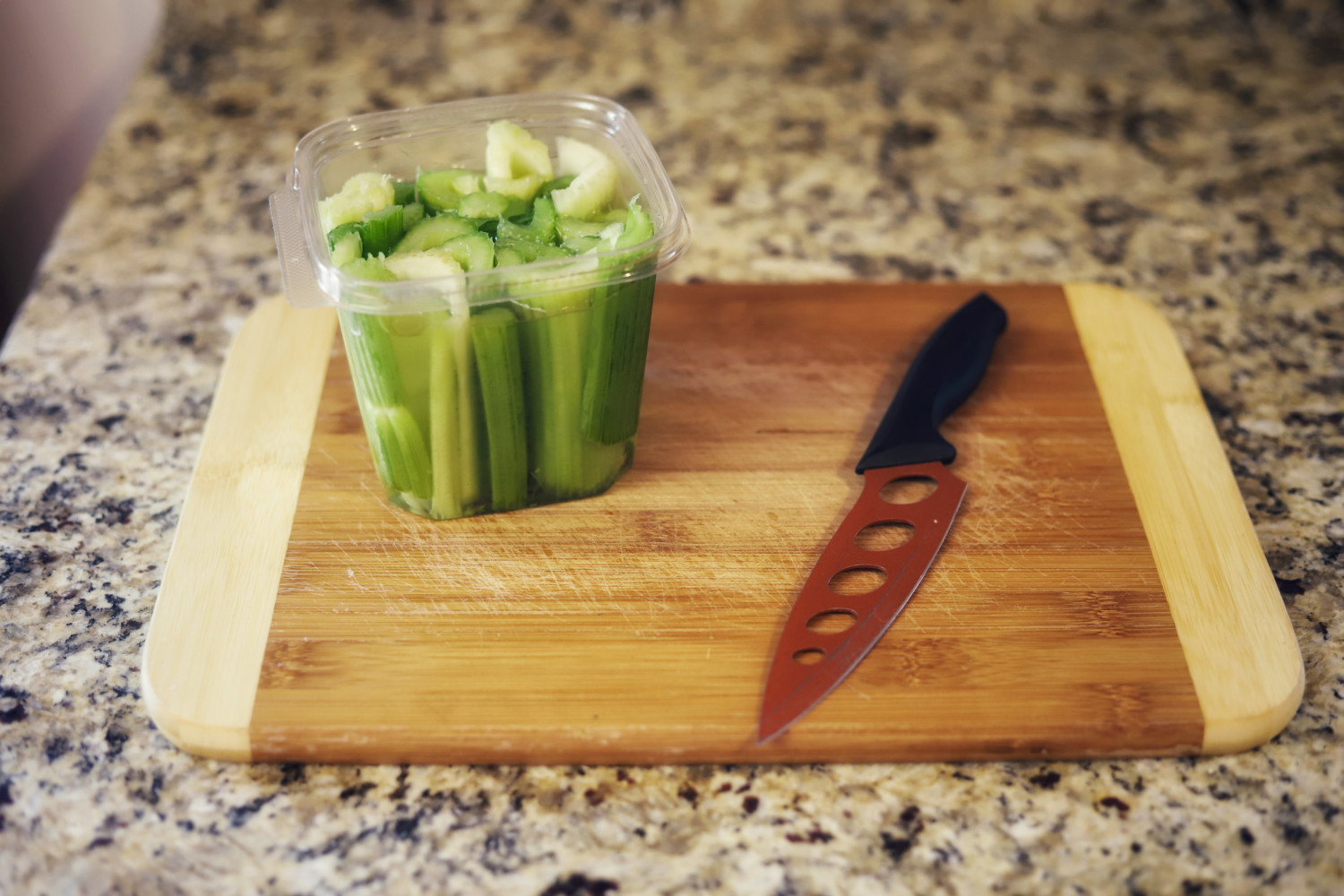

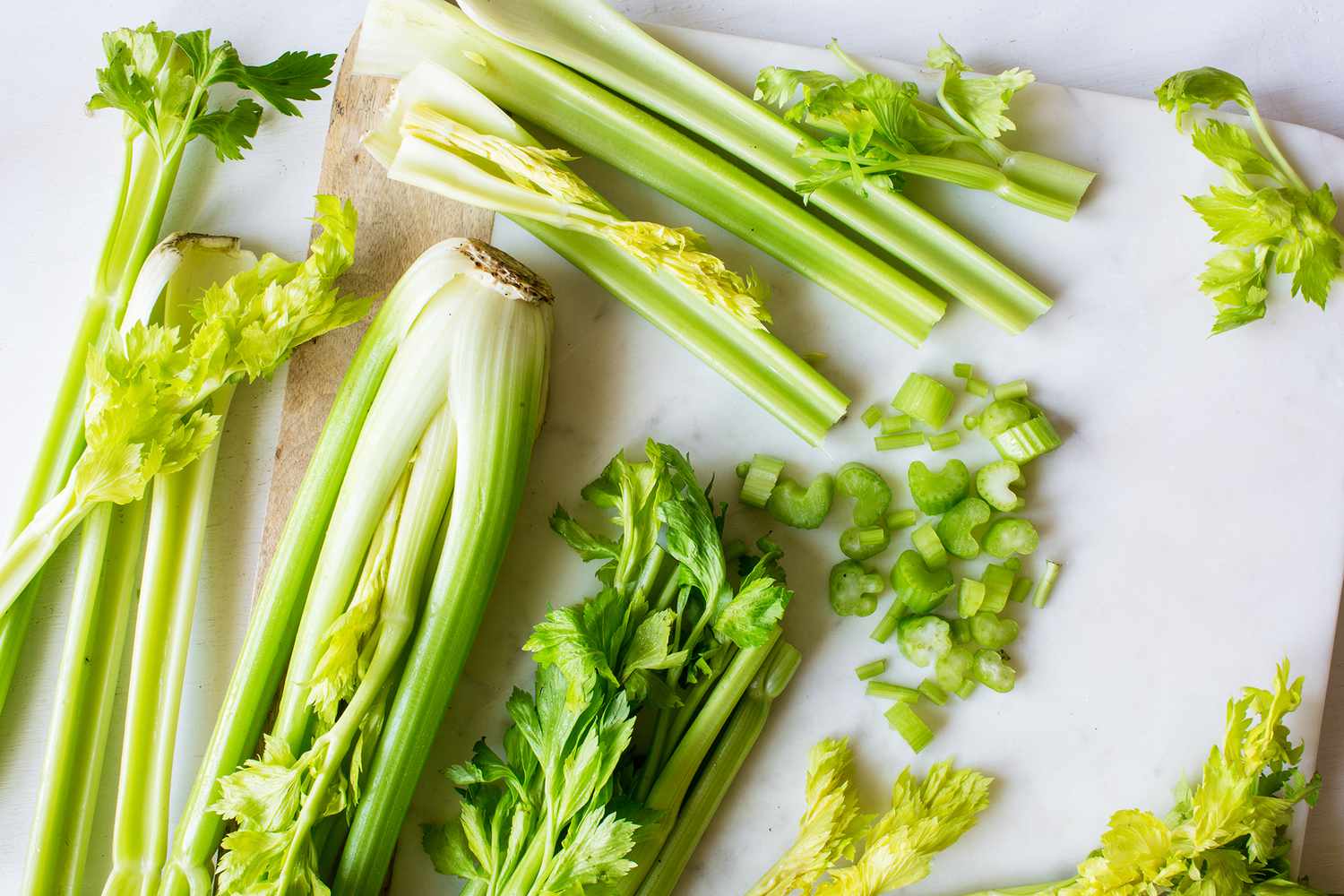
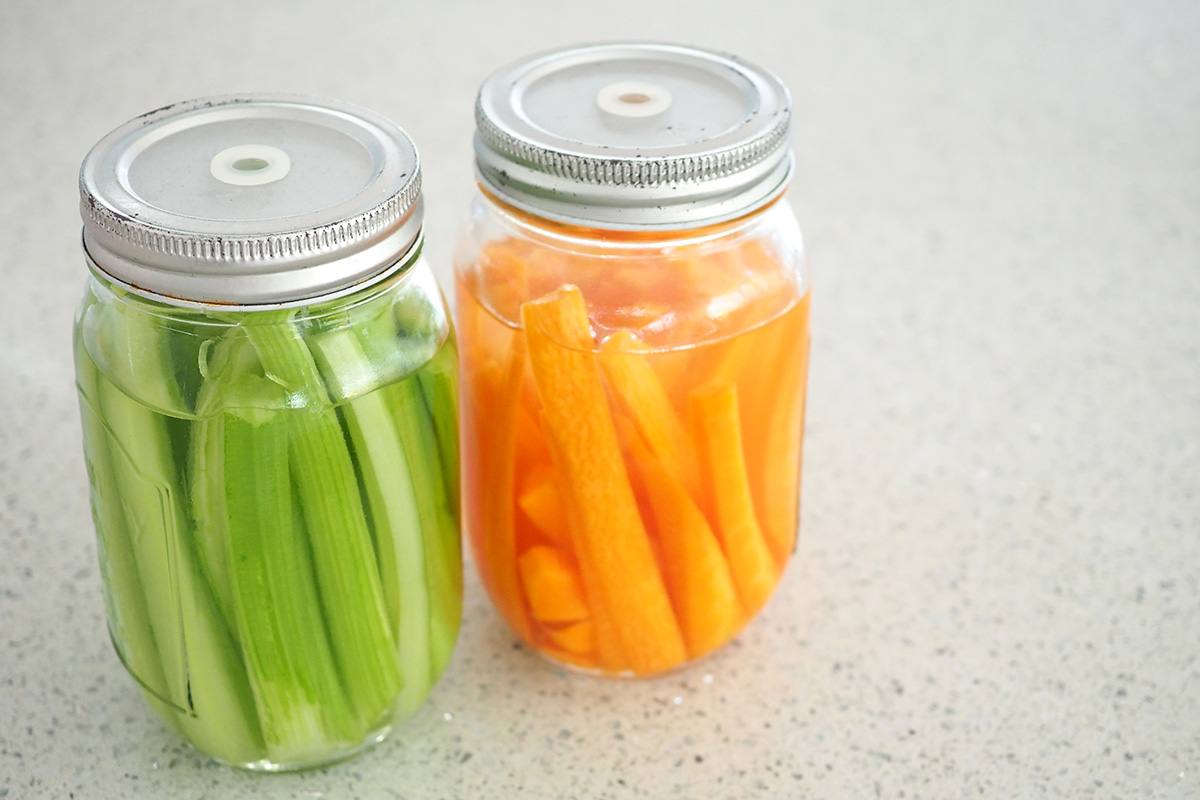
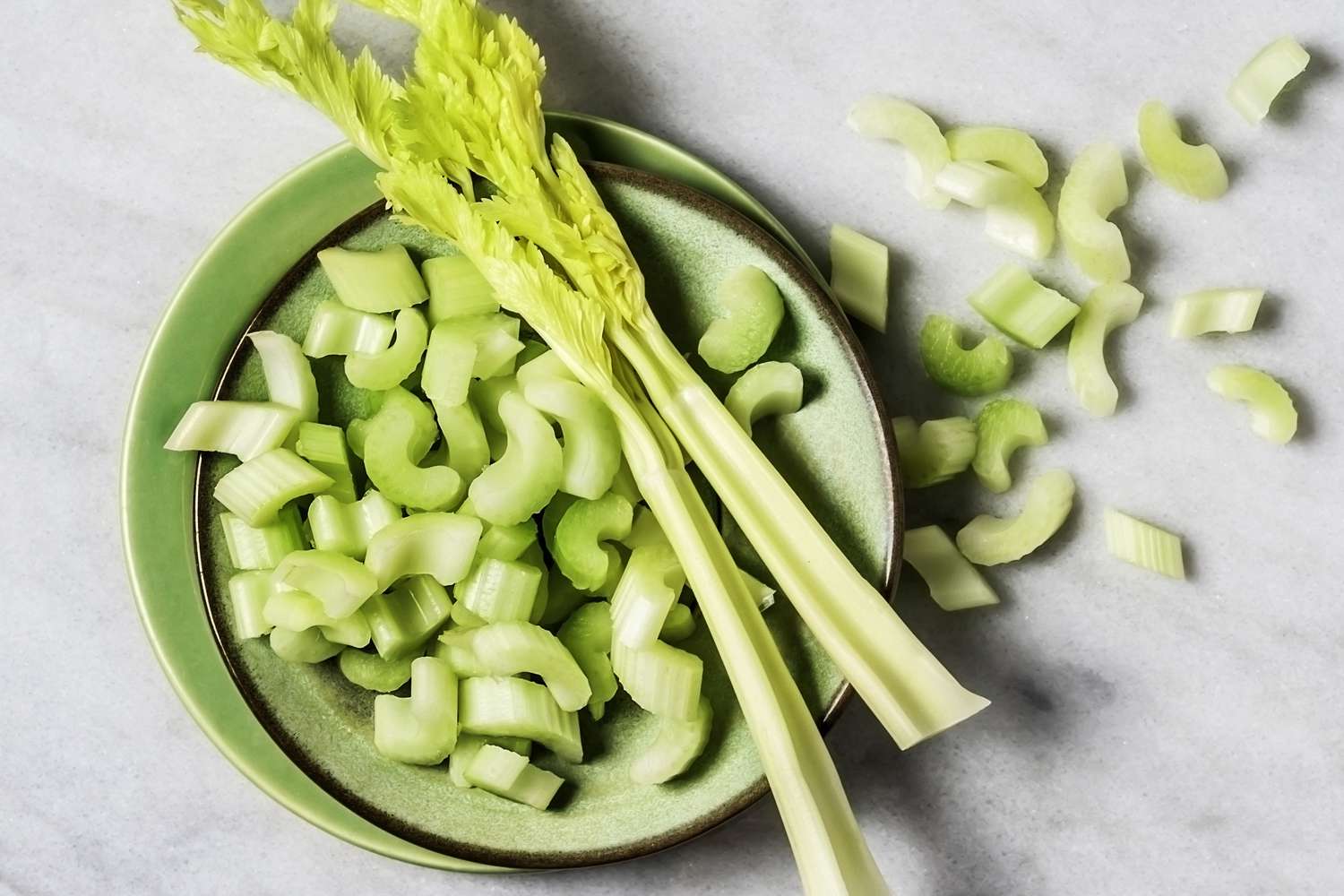

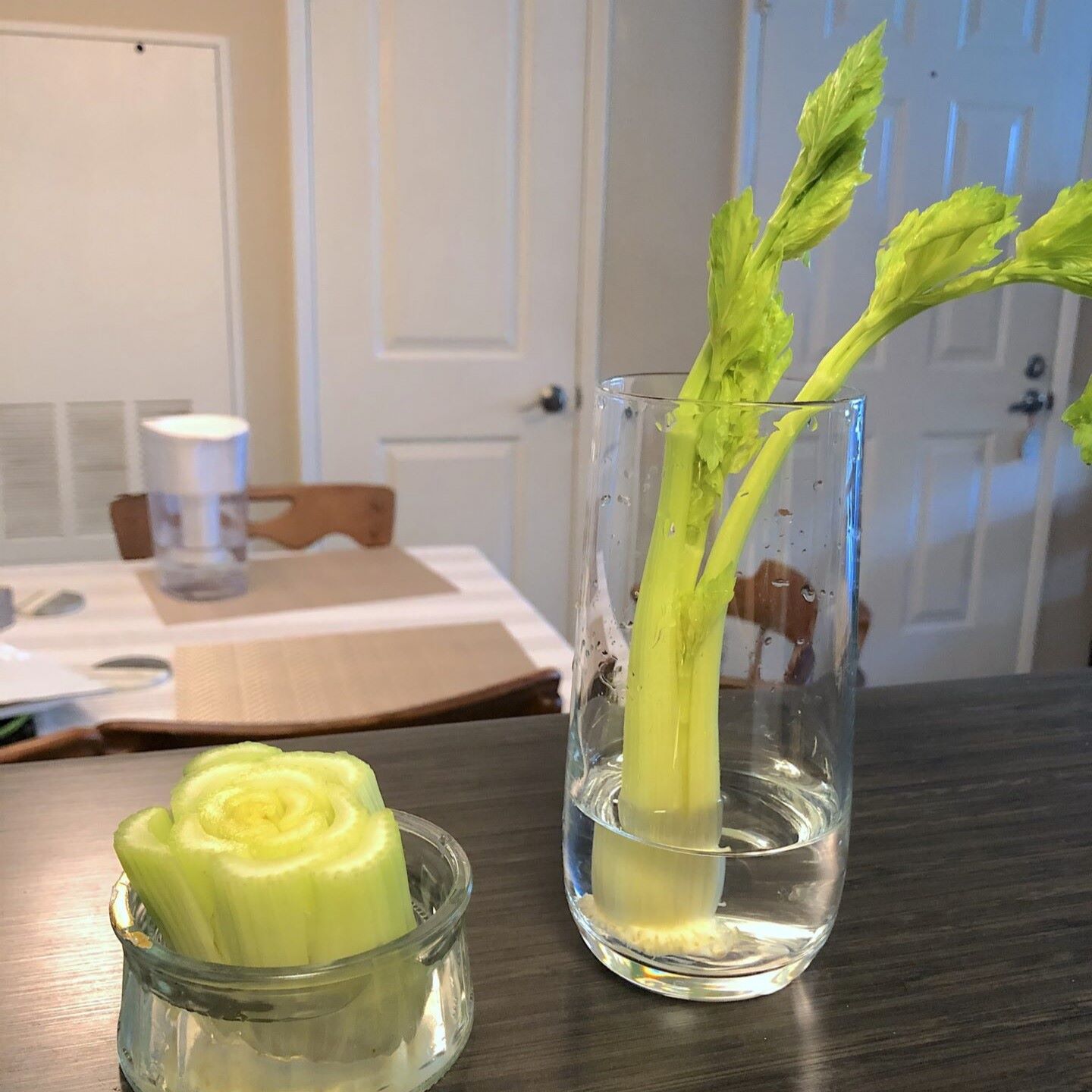

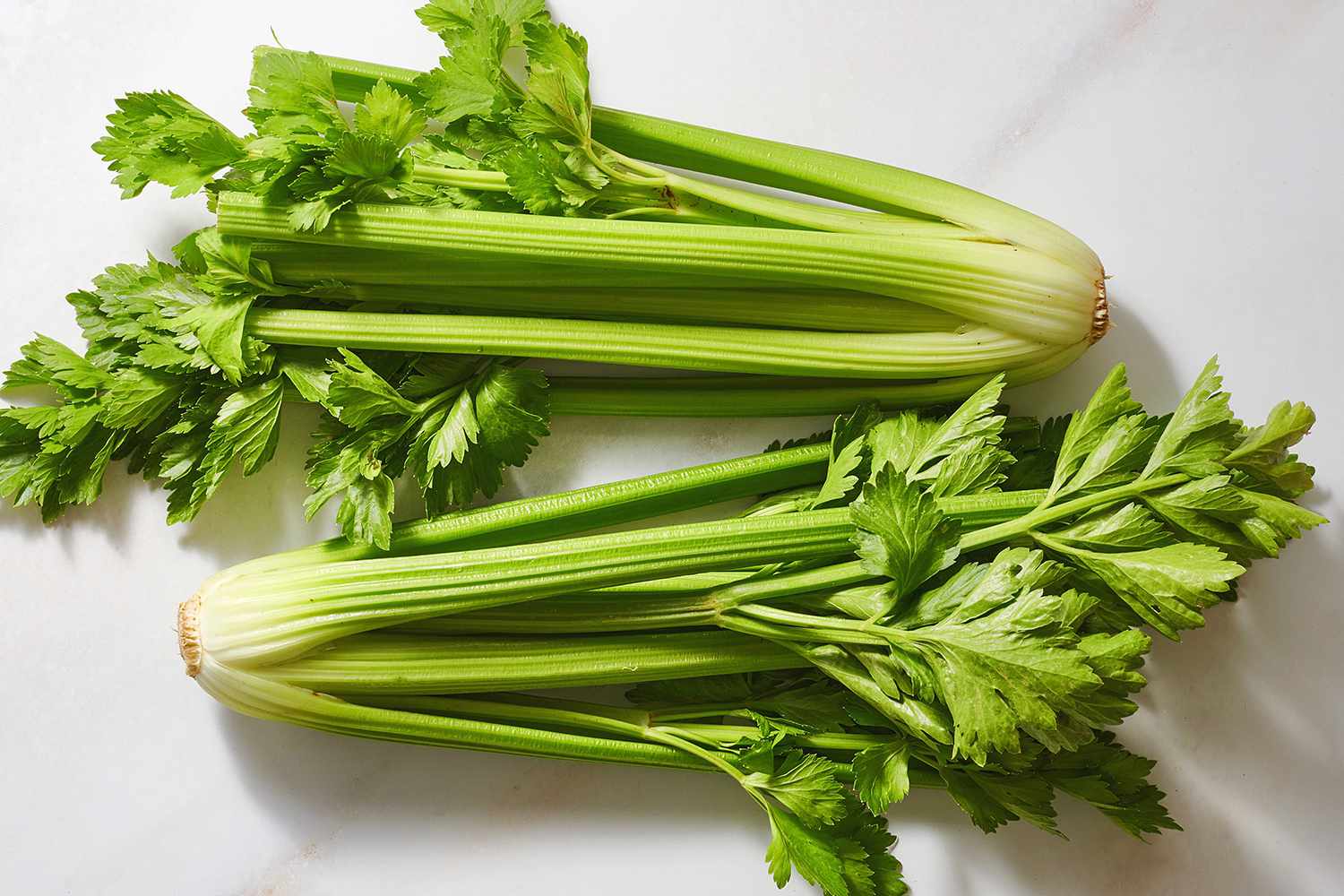

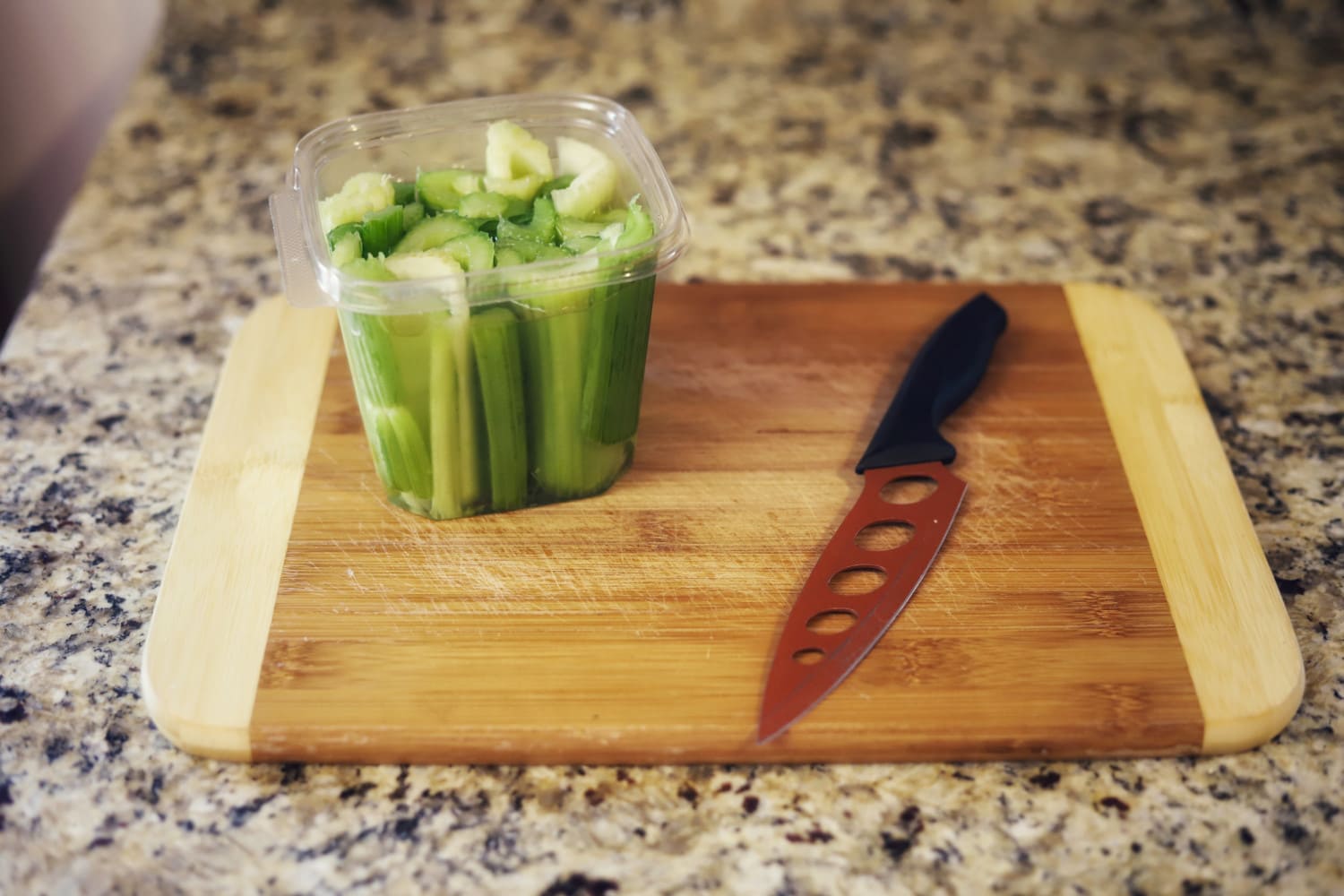

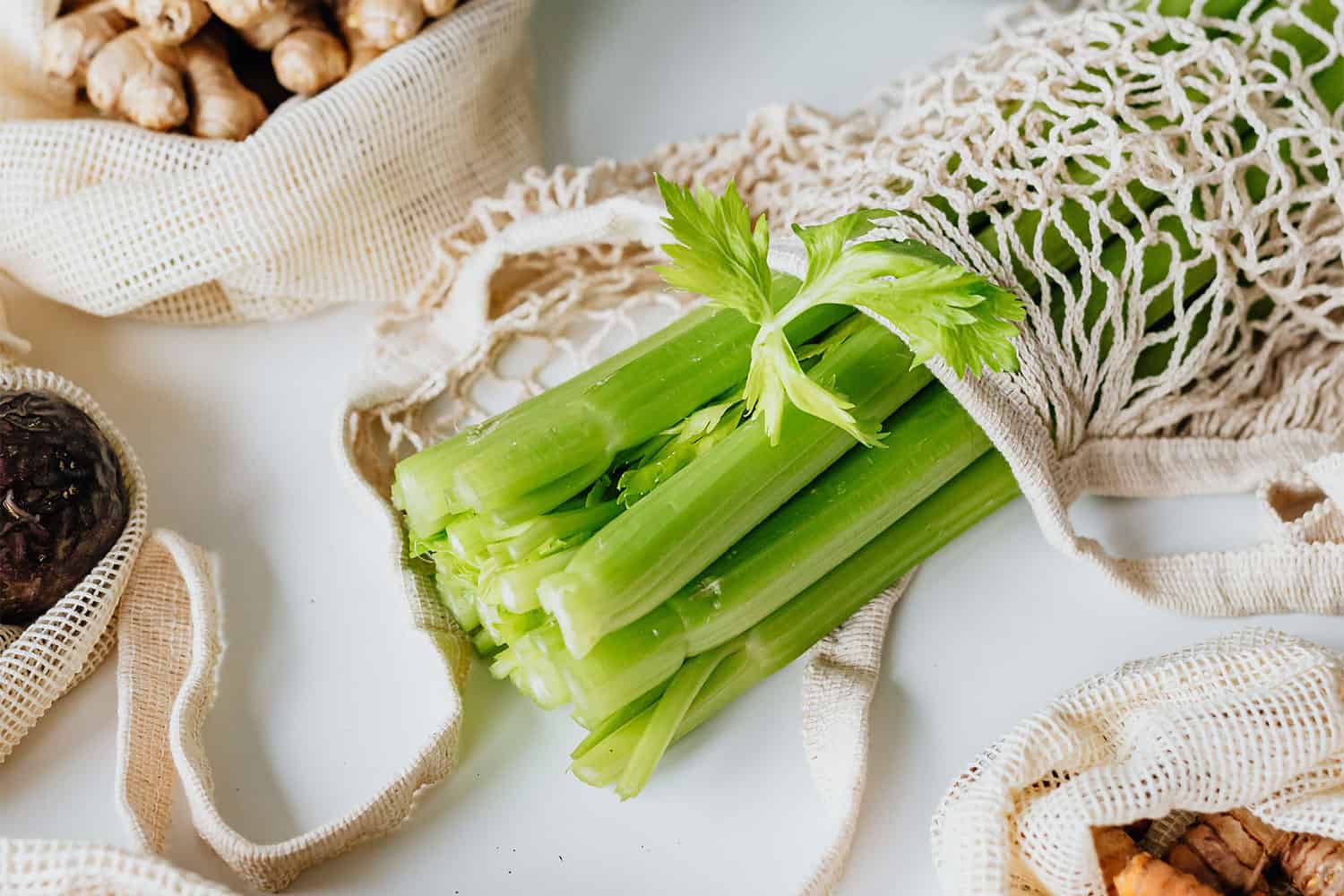

0 thoughts on “How To Store Celery”